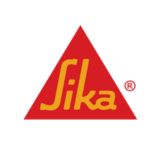Every day, we passionately commit to driving sustainable development and performance. With transparency and a result-driven approach at our core, we actively drive sustainability across the supply chain, creating lasting value for all our stakeholders.
We are sustainably committed, innovative, impactful, growing.
We are Sustainably Sika.
Impact Areas
As part of the Sika Strategy 2028, we are sustainably engaged in three key areas: People, Planet, and Solutions. We aim to empower and develop our people, contribute to protecting natural resources and the planet, and cultivate our innovative and pioneering spirit to deliver solutions for a better, more sustainable future.
People
At Sika, we empower our employees with innovative development programs designed to drive growth and success. Our global reach and close customer partnerships enable us to embrace diverse cultures, share expertise, and explore opportunities across borders. Committed to sustainability, our teams foster creativity, inspire a culture of continuous learning, and collaborate to achieve meaningful impact together.
Planet
Sika is dedicated to sustainability through its net-zero commitment, focusing on reducing emissions, minimizing fossil fuel use, and increasing energy efficiency. We refine product formulations using alternative, renewable or recycled materials, partner with suppliers to minimize the carbon footprint of raw materials and packaging and target a reduction of waste disposal and water discharge per ton of product sold. Our shift towards a circular approach ensures resources are reused and/or recycled, while robust waste and water management practices minimize discharge and enhance wastewater reuse.
Solutions
We are Sustainably Innovative.
Developing sustainable solutions is at the center of Sika Strategy 2028. Our product engineers are driven by clear ambitions: to extend the lifespan of buildings and industrial applications, reduce maintenance and carbon emissions, improve energy and material efficiency, enhance user-friendliness, and health and safety. Sika’s cutting-edge solutions go beyond performance, they drive the transformation of the construction and manufacturing industries toward greater social and environmental responsibility.
Sustainability Reporting
The Sika Sustainability Report provides a comprehensive overview of the company's sustainability performance against its strategic target areas and beyond. Simultaneously, it highlights the performance of its material topics, reflecting the sustainability impacts and dependencies along the value chain.

